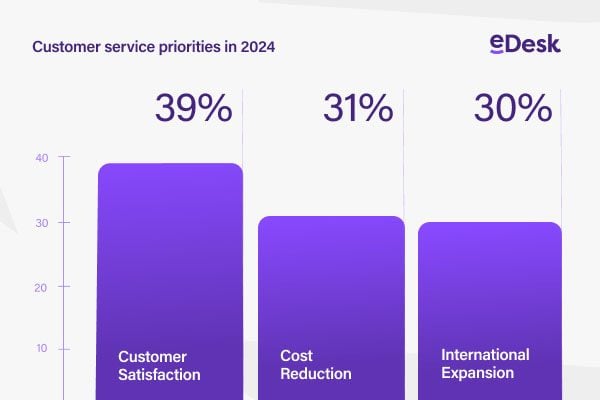In our monthly ‘Know your data’ series, penned by Scott Bagnall, Head of Product at Volo Commerce, we are looking at how you can use data to grow your business. Detailed in a webinar earlier this year, if you’re a Volo customer then the reports are all available to you in the Vision reporting and analytics module, but for non-Volo users you should still be considering the same factors in order to scale and grow your business. We are collating all of the articles here so if you missed one you can find them all in one place.
So far in this series we’ve looked at data analysis and reporting for best sellers, your product sales velocity, your slow or dead stock, your margins and stock forecasting. Today we’re going to talk about refunds.
Refunds Analysis
Refunds are rubbish, there’s no way around it. Partial refunds, full refunds, cancelled orders and returns – they kill profits. Even credit notes with their silver lining of retained income mean a hit on your finances now and further down the line. It’s critical you manage refunds, returns and credits as closely as possible.
If you’re a distributor of motor parts, tools and accessories, for example, you’ll be well used to high returns in your traditional B2B routes to market, since the garage or dealership will regularly order a couple of parts, fit the one that works the best and return the other. Your distribution operations are modelled for this daily to and fro. If you’re selling direct to consumers via Amazon or eBay for example, they’re generally going to buy the part they think they need and if it’s not right it’s coming back. Refunds and returns for automotive aftermarket ecommerce is a different kettle of fish, and a kettle you need to avoid.
What I’m not going to talk about is your own business policies: under what circumstances, at what value and within what timeframe you deal with refunds, returns (at your or the buyer’s expense) and credit notes. These are down to the best practices of the marketplaces, your own approach and the guidance of your advisers. Instead, I’m going to focus on the things your data is telling you – or that you should be looking for from your data – in this area.
Analysis
To start with, how big is your refund problem? What percentage of your overall revenues end up being refunded? How many refunds and returns are you having to process? Can you estimate a cost for processing a refund, or processing a return? Over what timeframe are you looking? Can you compare timeframes to see if your returns picture is trending up, staying constant, or trending down? Can you draw any conclusions about your general business situation to account for this, like seasonality for example?
Then you need to get into the detail, and for this you’re going to need the raw data and some filtering options. Look at your refunds by supplier, by product line, by web store or marketplace, by region, by shipper. What patterns are emerging? Then drill into each specific refund or return to pinpoint the problem. Separating your analysis for refunds, returns and credit notes will give you further granularity.
For example, let’s say you’ve recently launched a new product line. You’re going to want to know how well it’s selling, where, and to whom. You’re also going to want to know if buyers aren’t happy, and the extent of the problem. Figuring out early whether it’s down to the product, listing (as in misrepresenting the product) or the shipping will help you fix the teething issues and grow from there.
Refund Reasons
Recording why an item was rejected by the buyer before or after pick-pack-ship is vital intelligence. Your ecommerce system will either let you pick from some pre-set drop-down list, or allow you to fill in a free text field, or you can record it in a spreadsheet. Clearly there’s a bunch of possible reasons – not as described, wrong item packed, wrong item ordered, faulty, damaged, to name but a few – and analysing your refunds by reason will again point you in the right direction.
Let’s say you’re receiving a lot of refunds from a specific region you’re shipping to and they’re the wrong item ordered. Is this a cultural thing with returns behaviour that you need to understand better? Or perhaps there are some localisation or translation issues that are leading to the confusion.
Another example: you’re getting a lot of a specific type of refund because the items are damaged on receipt. You think this might be a supplier issue and a component part is faulty to start with, but then you realise that it’s the same shipping agent every time. They might not be handling the goods very well, so you need to have words or else look at your packing processes for those items.
Furthermore, if you’re getting a lot returns with ‘not as described’ as the reason, it’s a good idea to review and updating the listing. Consider adding more pictures so the customer can get a better look at the product. For a big ticket, big-selling item like a car part, you could also offer a link to a video showing how to use or intal the item. Updating the listing description to point out the more about the product and include answers to frequently asked questions will also help. Remember: driving down returns is the goal of reading your returns data.
A word of advice here: if you allow refund reason descriptions to be filled in by free text on your system, it’s going to mean more work to manually group them into meaningful headings to do your analysis. A drop-down list forces the answer but is less work for you and generally more illuminating.
Margin Modelling
I talked earlier about estimating your costs for refunds and returns. I also covered margins in a previous article in this series. These are additional costs you can model on your analysis, along with the other costs, to arrive at a true picture of your margin for each product or product line. This is preferable to applying a general margin figure across all your products, since then it’s likely you’ll end up selling some products that you’re actually making a loss on without knowing it.
Refund processing cost, return shipping cost, whether the marketplace charges fees on refunds, whether your ecommerce system does; these are all important cost elements that will help you understand your margin picture and protect your profitability. As with many things, this is a risk-return call. You can either do this manually, or you can invest in a reporting system with flexibility to allow you to build the model and automate your analysis.
To discuss how you can improve your business with a better handle on your refunds, please send us a note.








